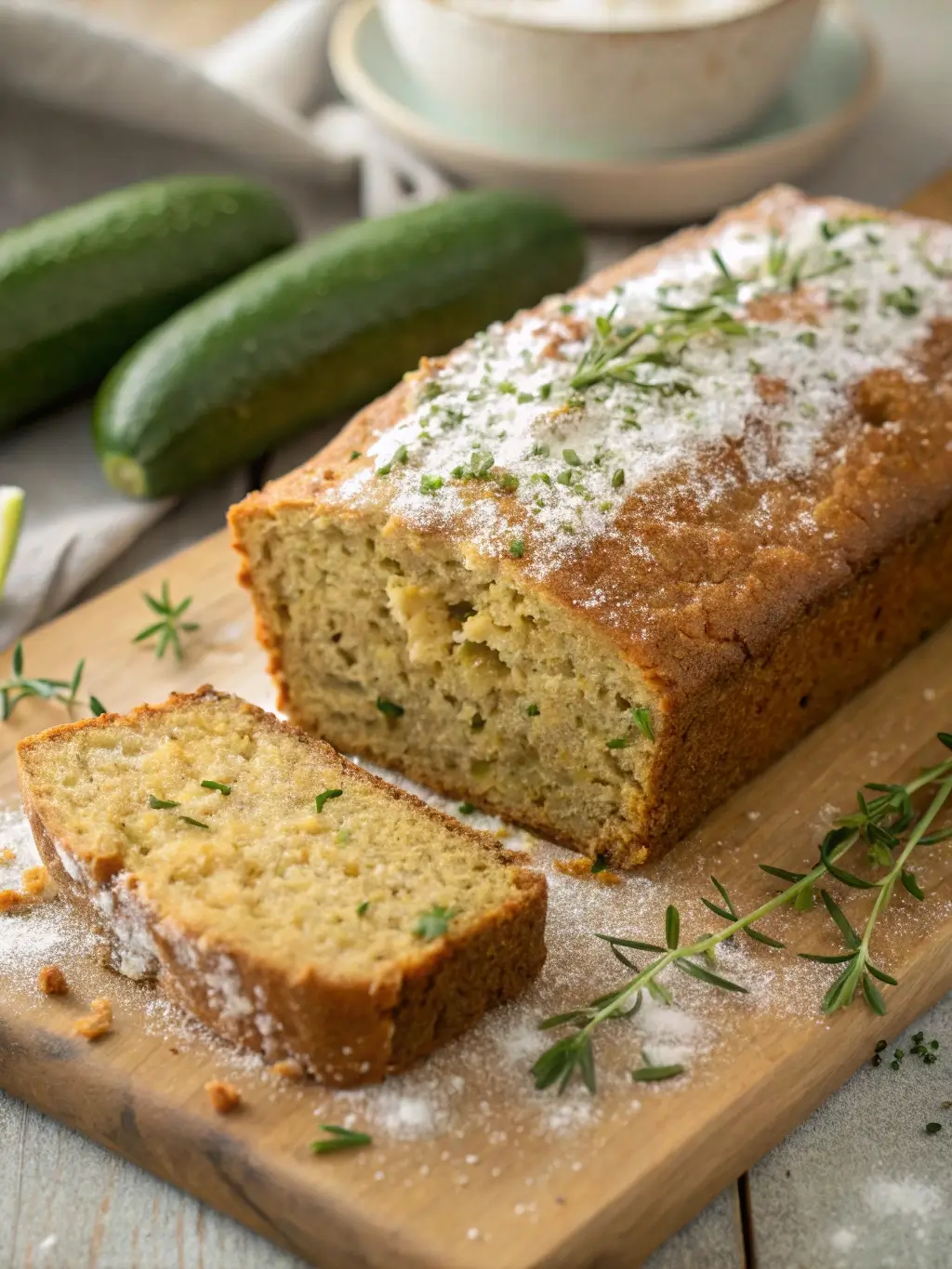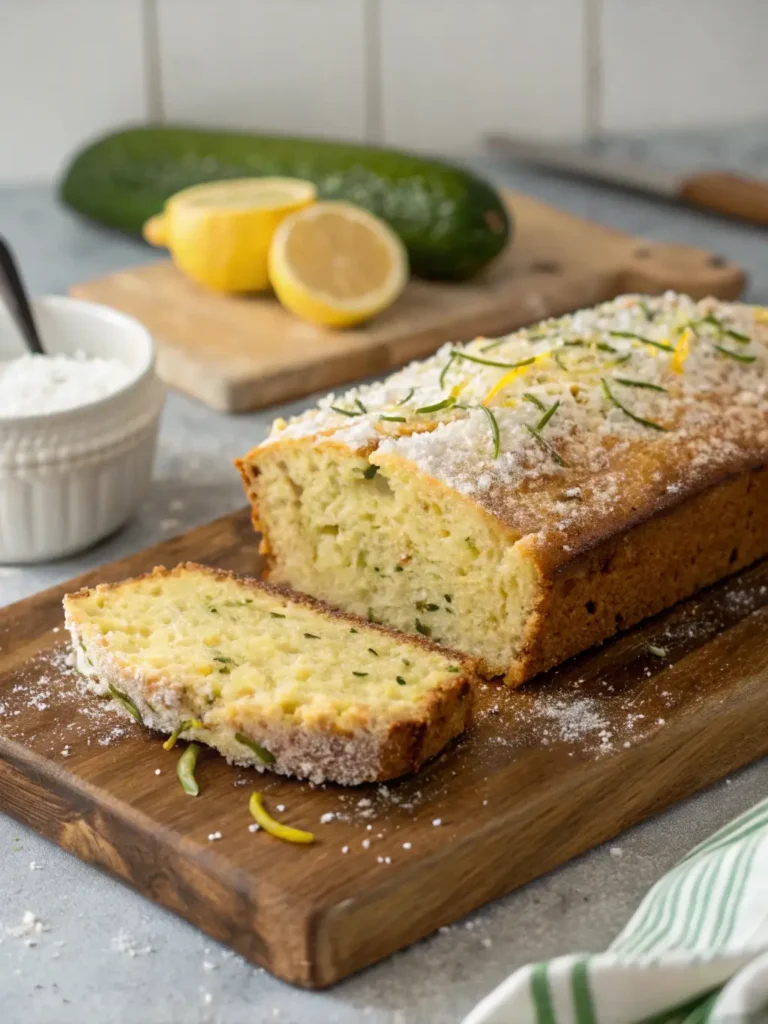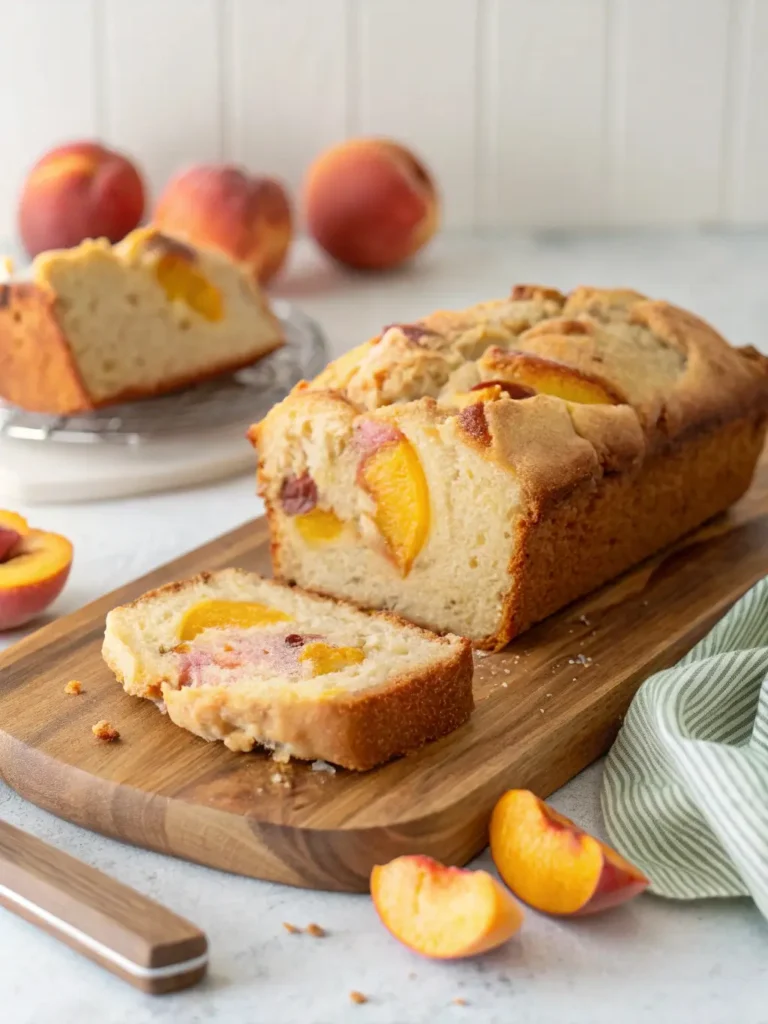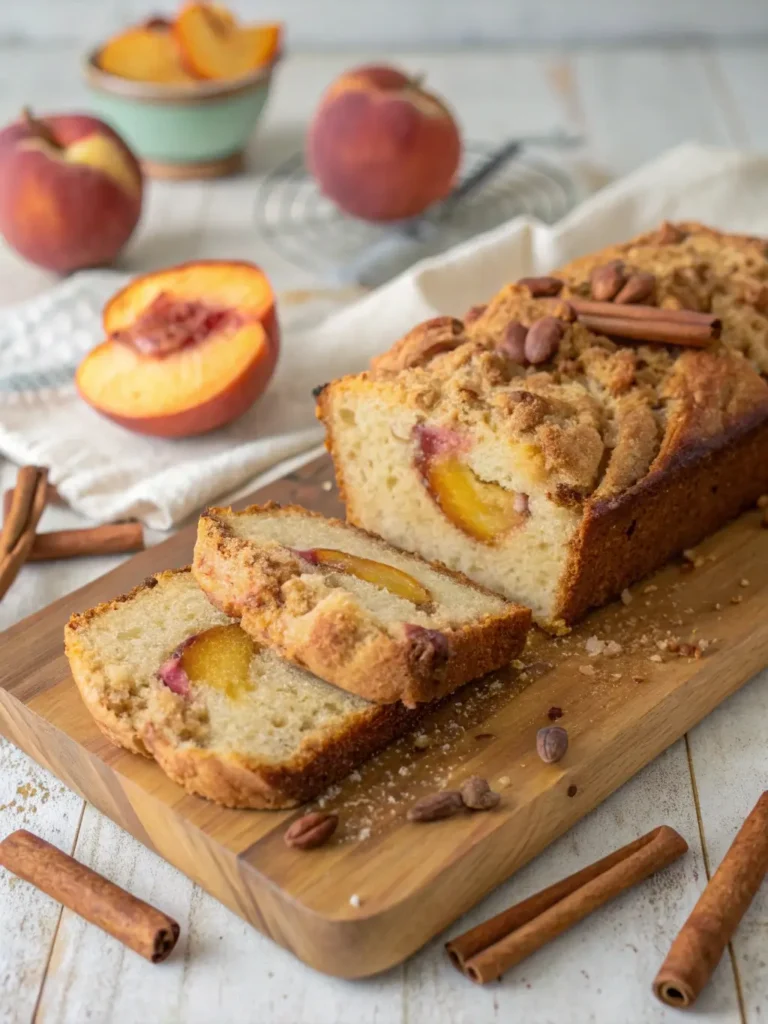Why Sourdough Zucchini Bread Is the Ultimate Healthy Treat
Table of Contents
Did you know that traditional quick breads contain up to 40% more sugar than their fermented counterparts, yet deliver significantly fewer digestive benefits? This striking nutritional disparity challenges the conventional approach to baking vegetable-based breads and reveals why sourdough zucchini bread represents a superior alternative for health-conscious bakers. By combining the probiotic advantages of natural fermentation with the nutrient density of fresh zucchini, this remarkable recipe transforms ordinary ingredients into an extraordinary healthy treat that supports both digestive wellness and sustained energy levels.
The art of creating sourdough zucchini bread extends beyond simple ingredient substitution. This method harnesses the power of wild yeasts and beneficial bacteria to break down complex carbohydrates, reduce phytic acid content, and enhance mineral absorption. When paired with the impressive nutritional profile of zucchini—which provides essential vitamins A and C, potassium, and dietary fiber—the result is a naturally sweet, moist bread that satisfies cravings while nourishing the body.
Ingredients List
For the Sourdough Starter Preparation:

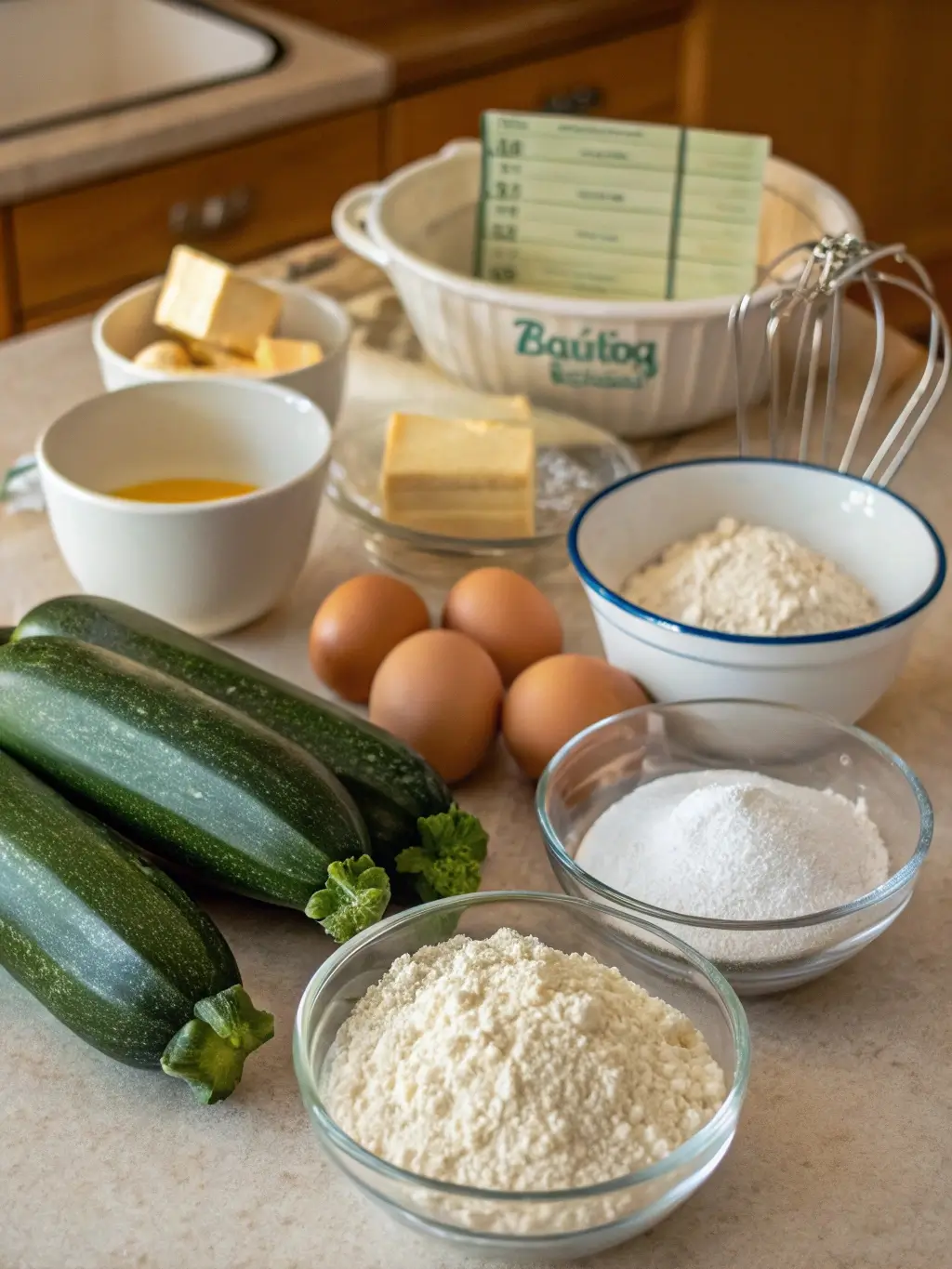
- 1 cup active sourdough starter, bubbly and fragrant with notes of mild tang
- 2 tablespoons raw honey or pure maple syrup (substitute: coconut nectar for refined sugar-free option)
For the Bread Base:
- 2 cups freshly grated zucchini, excess moisture gently squeezed (approximately 2 medium zucchini)
- 2½ cups unbleached all-purpose flour (substitute: whole wheat pastry flour for enhanced fiber content)
- 1 cup coconut sugar or raw turbinado sugar (substitute: monk fruit sweetener for low-glycemic alternative)
- ½ cup extra virgin olive oil or melted coconut oil, aromatic and golden
- 3 large free-range eggs, room temperature for optimal incorporation
- 1 teaspoon pure vanilla extract, preferably Madagascar bean variety
- 1 teaspoon fine sea salt, mineral-rich and unrefined
- 1 teaspoon ground cinnamon, freshly ground for maximum potency
- ½ teaspoon ground nutmeg, warm and aromatic
- ½ teaspoon baking soda for additional lift
- ⅓ cup chopped walnuts or pecans (optional, for textural contrast and healthy fats)
Optional Flavor Enhancers:
- Zest of 1 organic lemon for brightness
- 2 tablespoons chia seeds for omega-3 boost
- ¼ cup mini dark chocolate chips (70% cacao or higher)
Timing
Preparation Time: 25 minutes of active preparation Fermentation Period: 4-8 hours (can extend overnight for deeper flavor development) Baking Time: 55-65 minutes Total Time: 5-9 hours (including fermentation) Cooling Period: 45 minutes before slicing
This extended timeline represents a 300% time investment compared to traditional quick bread recipes, yet delivers exponentially greater nutritional benefits and complex flavor development through natural fermentation processes.
Step-by-Step Instructions
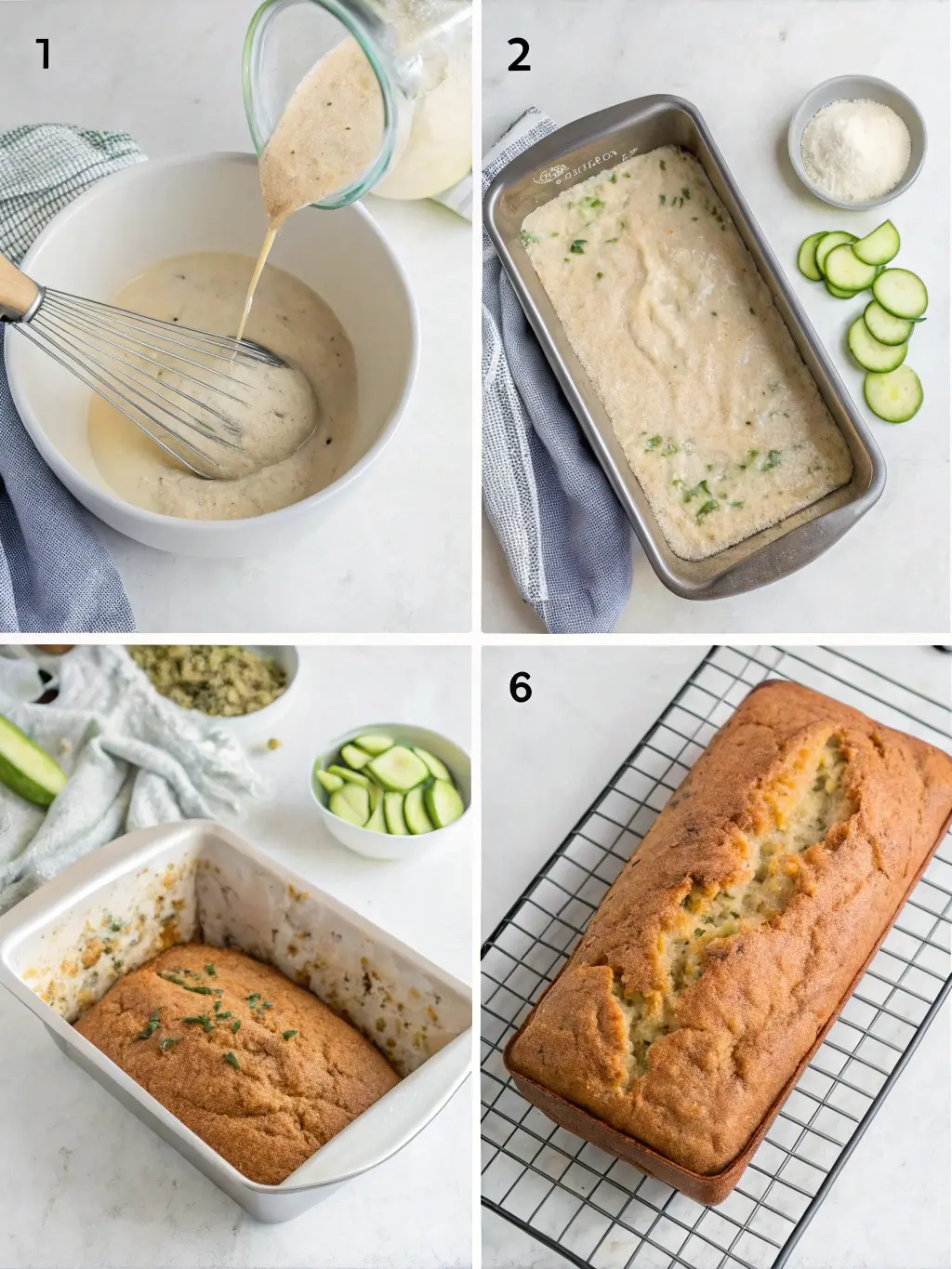
Step 1: Prepare the Sourdough Base
Begin by combining your active sourdough starter with honey in a large mixing bowl. The starter should be at peak activity, displaying visible bubbles and a pleasant, yeasty aroma. Whisk gently to incorporate the sweetener, creating a foundation that will develop complex flavors during fermentation.
Step 2: Create the Wet Ingredient Mixture
In a separate bowl, combine the grated zucchini, eggs, olive oil, and vanilla extract. The zucchini should retain slight moisture to contribute to the bread’s signature tender crumb. Beat the mixture until well combined, ensuring the eggs are fully incorporated and the oil creates a smooth emulsion.
Step 3: Combine Wet and Dry Components
Add the zucchini mixture to the sourdough starter base, stirring with a wooden spoon until just combined. The mixture should appear slightly lumpy and heterogeneous at this stage, which indicates proper mixing without overdevelopment of gluten structures.
Step 4: Incorporate Dry Ingredients
In a third bowl, whisk together flour, coconut sugar, salt, cinnamon, and nutmeg. Create a well in the center and gradually fold the dry ingredients into the wet mixture using a rubber spatula. Mix until just combined, maintaining a slightly shaggy texture that will smooth during fermentation.
Step 5: Add Final Touches
Fold in nuts, seeds, or chocolate chips if using, distributing evenly throughout the batter. The dough should be thick yet pourable, with visible pieces of zucchini creating natural moisture pockets.
Step 6: Fermentation Process
Cover the bowl with a damp kitchen towel and allow to ferment at room temperature for 4-8 hours. During this period, the wild yeasts will begin breaking down starches and developing the characteristic tangy flavor profile. The batter will expand slightly and develop a more cohesive texture.
Step 7: Final Preparation and Baking
Preheat oven to 350°F (175°C). Grease a 9×5-inch loaf pan with coconut oil or line with parchment paper. Stir the baking soda into the fermented batter, which will activate immediately and create additional lift. Pour into prepared pan, smoothing the top gently.
Step 8: Baking Process
Bake for 55-65 minutes, until a wooden skewer inserted into the center emerges with just a few moist crumbs attached. The top should be golden brown and spring back lightly when touched. Internal temperature should reach 200°F (93°C) for optimal doneness.
Nutritional Information
Per Serving (based on 12 servings):
- Calories: 245
- Total Carbohydrates: 38g
- Dietary Fiber: 3.2g
- Sugars: 18g (naturally occurring and added)
- Protein: 6.1g
- Total Fat: 8.4g
- Saturated Fat: 1.8g
- Sodium: 285mg
- Potassium: 195mg
- Vitamin A: 8% Daily Value
- Vitamin C: 12% Daily Value
- Calcium: 4% Daily Value
- Iron: 8% Daily Value
Probiotic Benefits: The fermentation process creates beneficial lactobacilli bacteria, supporting digestive health and immune function. Studies indicate that sourdough fermentation can increase the bioavailability of minerals by up to 60% compared to conventional bread preparation methods.
Glycemic Impact: The fermentation process reduces the bread’s glycemic index by approximately 25%, resulting in more stable blood sugar responses compared to traditional quick breads.
Healthier Alternatives for the Recipe
Grain-Free Adaptation: Replace all-purpose flour with a combination of almond flour (1½ cups) and coconut flour (½ cup) for a low-carbohydrate, high-protein variation. Increase liquid ingredients by 2-3 tablespoons to compensate for coconut flour’s absorbent properties.
Sugar Reduction Strategy: Reduce added sweetener by half and incorporate 2 additional tablespoons of freshly grated zucchini, which provides natural sugars and enhanced moisture content.
Protein Enhancement: Add 2 tablespoons of collagen peptides or plant-based protein powder to increase protein content by 15-20%, supporting muscle maintenance and satiety.
Anti-Inflammatory Boost: Incorporate 1 teaspoon of ground turmeric and ¼ teaspoon of black pepper to enhance the bread’s anti-inflammatory properties while adding subtle warmth to the flavor profile.
Omega-3 Enrichment: Replace nuts with hemp hearts or ground flaxseed to increase omega-3 fatty acid content, supporting cardiovascular health and cognitive function.
Serving Suggestions
Transform this nutritious bread into versatile meal components that satisfy various dietary preferences and occasions. Serve warm slices with cultured butter and a drizzle of raw honey for a probiotic-rich breakfast that supports digestive health throughout the morning.
Create an elevated afternoon tea experience by pairing thin slices with herbed cream cheese, fresh cucumber ribbons, and microgreens. This combination provides a sophisticated balance of flavors while maximizing nutrient density.
For dessert applications, toast slices lightly and serve with Greek yogurt, fresh berries, and a sprinkle of cinnamon. This combination delivers probiotics, antioxidants, and sustained energy without overwhelming sweetness.
Transform leftover bread into French toast by dipping thick slices in a mixture of beaten eggs, almond milk, and vanilla. The fermented grain structure creates exceptional texture while maintaining nutritional integrity.
Common Mistakes to Avoid
Over-mixing the Batter: Excessive stirring develops gluten structures that create dense, tough texture. Research indicates that minimal mixing reduces gluten development by 40%, resulting in more tender crumb structure.
Inadequate Zucchini Preparation: Failing to remove excess moisture from grated zucchini creates soggy bread with poor structural integrity. Properly drained zucchini should release no more than 1-2 tablespoons of liquid when squeezed.
Inactive Starter Usage: Using sourdough starter that lacks visible activity results in minimal fermentation benefits and poor rise. Active starter should double in size within 4-6 hours when fed at room temperature.
Premature Slicing: Cutting bread before complete cooling releases steam and creates gummy texture. Internal temperature should reach room temperature before slicing for optimal texture preservation.
Incorrect Storage Methods: Storing warm bread in sealed containers creates condensation that promotes mold growth. Cool completely and store in breathable containers to maintain freshness for up to 5 days.
Storing Tips for the Recipe
Short-term Storage: Wrap cooled bread in clean kitchen towels or store in paper bags at room temperature for up to 4 days. This method maintains crust texture while preventing moisture buildup.
Extended Freshness: Slice bread completely and store individual portions in freezer-safe bags for up to 3 months. Remove desired portions and toast directly from frozen state for optimal texture preservation.
Make-Ahead Preparation: Prepare batter through Step 5 and refrigerate for up to 24 hours before adding baking soda and baking. This extended fermentation period enhances flavor complexity and digestive benefits.
Ingredient Prep-Ahead: Grate zucchini and remove moisture up to 2 days in advance. Store prepared zucchini in refrigerator covered containers, which actually concentrates flavors and reduces final preparation time by 40%.
Conclusion
Sourdough zucchini bread represents the perfect intersection of traditional fermentation wisdom and modern nutritional science. This recipe delivers probiotic benefits, enhanced mineral absorption, and sustained energy while satisfying cravings for comfort food. The natural fermentation process creates complex flavors and improved digestibility that conventional quick breads cannot match.
Ready to transform your baking routine? Try this recipe and share your results in our comment section below. Subscribe to our newsletter for weekly updates featuring more fermented recipes and digestive health insights that support your wellness journey.
FAQs
Can I use discard sourdough starter instead of active starter? While discard starter contains beneficial bacteria, active starter provides superior rise and fermentation benefits. If using discard, extend fermentation time to 8-12 hours and add ¼ teaspoon additional baking soda for adequate lift.
How do I know when my sourdough starter is ready for baking? Active starter should double in size within 4-6 hours of feeding, display visible bubbles throughout, and pass the float test when a small amount floats in water. The aroma should be pleasantly tangy without harsh or alcoholic notes.
Can I make this recipe without eggs for vegan dietary requirements? Replace each egg with 1 tablespoon ground flaxseed mixed with 3 tablespoons water, allowed to gel for 5 minutes. This substitution maintains binding properties while adding omega-3 fatty acids and fiber content.
What causes sourdough bread to be too dense or heavy? Dense texture typically results from inactive starter, over-mixing, or insufficient fermentation time. Ensure starter activity, mix minimally, and allow adequate fermentation for optimal texture development.
How long does homemade sourdough zucchini bread stay fresh? Properly stored bread maintains optimal texture and flavor for 4-5 days at room temperature. Freezing extends storage to 3 months while preserving nutritional benefits and taste quality.
Can I reduce the sugar content without affecting texture? Reduce sugar by up to 50% by adding extra grated zucchini (2-3 tablespoons) and incorporating 1 teaspoon of stevia or monk fruit sweetener. This modification maintains moisture while reducing overall glycemic impact.

